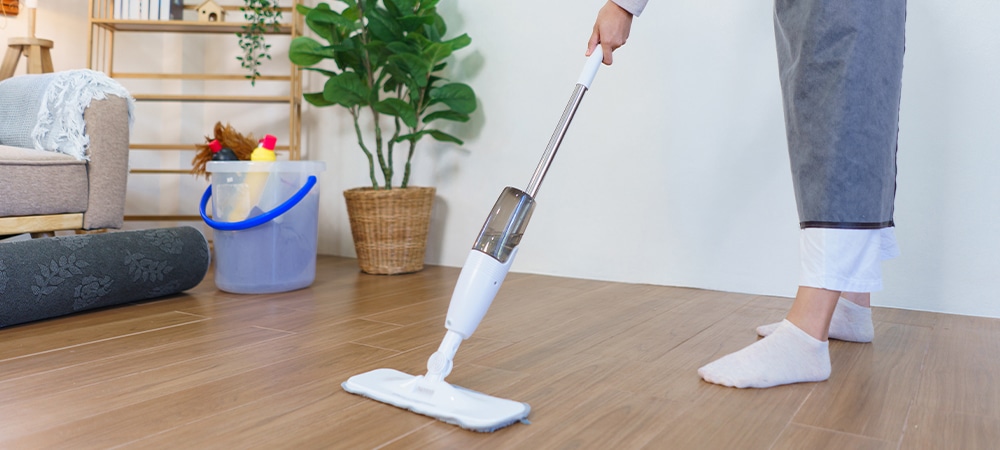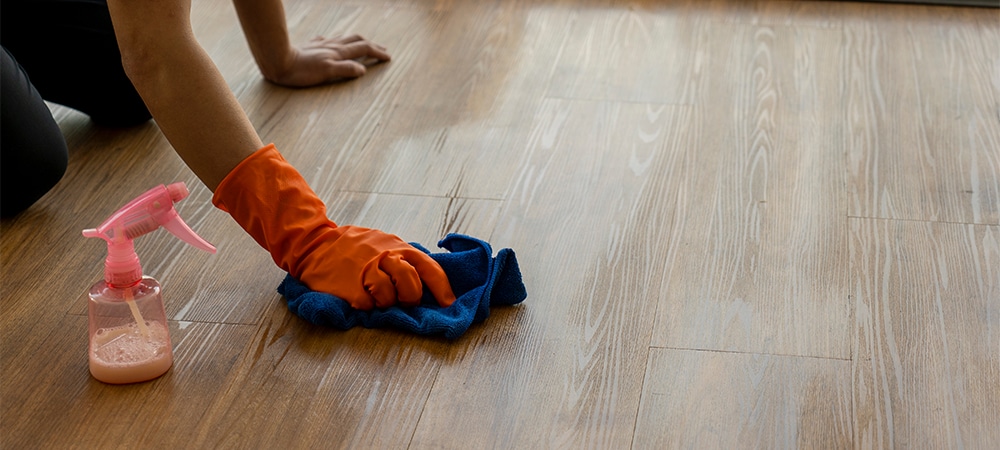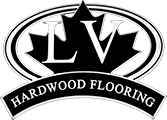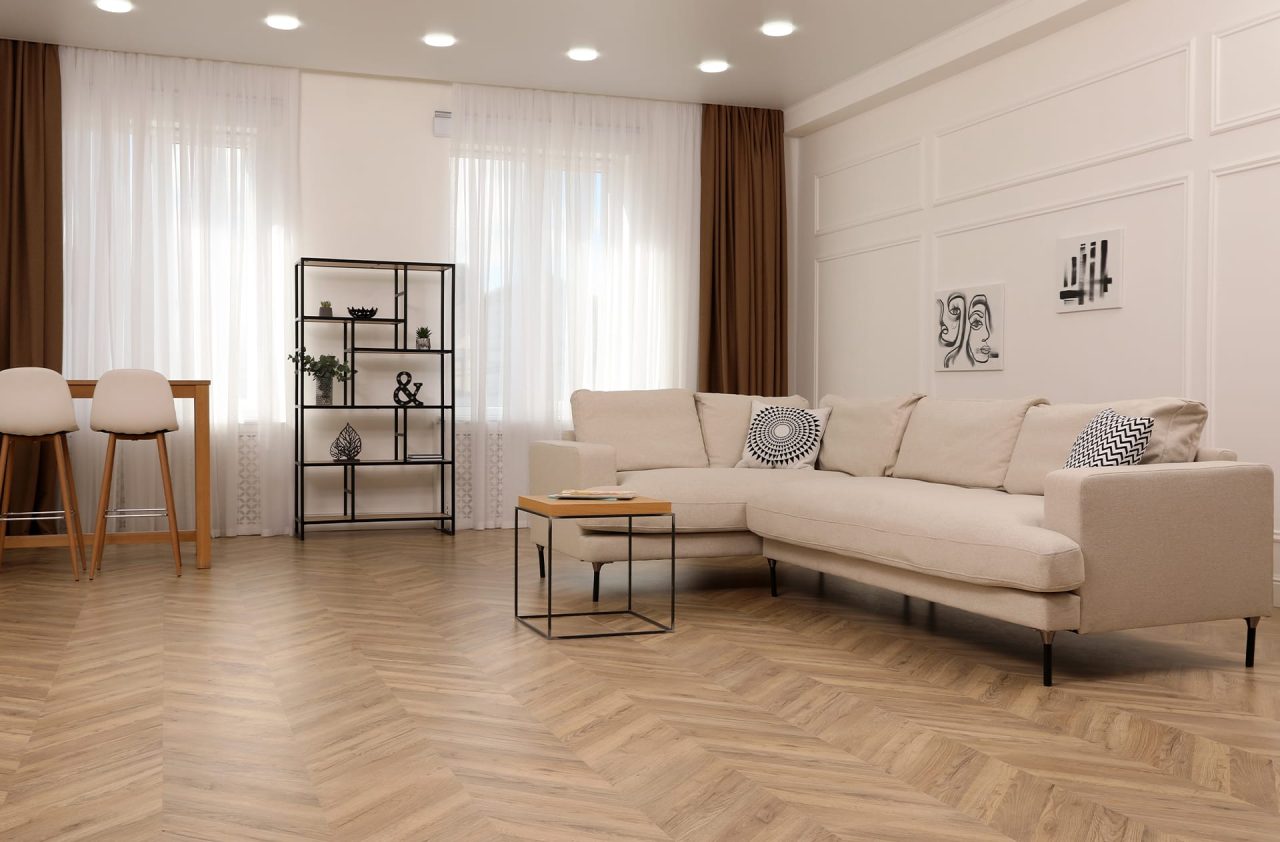Due to its durability, cost-effectiveness, and aesthetic versatility, vinyl flooring has become a favoured choice among homeowners. However, like any flooring material, it requires proper care to maintain its beauty and longevity.
The best way to clean vinyl flooring is using an apple cider vinegar and hot water solution. This mixture helps to remove dust and grime, leaving your floor looking vibrant. Also, you must ensure you vacuum regularly to prevent dirt accumulation.
This comprehensive guide explains how to clean vinyl flooring. With the tips in this article, you can clean your vinyl flooring without damage.
Tips for Cleaning Vinyl Flooring
Before diving into vinyl flooring cleaning methods, it’s crucial to understand the types of vinyl flooring. The market offers two main categories: Luxury Vinyl Tile (LVT) and Luxury Vinyl Planks (LVP).
Both types mimic the appearance of natural materials like wood and stone but differ in shape and installation methods. Despite their differences, LVT and LVP share similar cleaning and maintenance requirements.
The tips we share below can help you keep your vinyl flooring clean
Regular Cleaning: The Key to Luster
The secret to maintaining the allure of vinyl flooring lies in regular cleaning. Dust, dirt, and debris can act like sandpaper underfoot, wearing down the finish of your floor. To prevent this:
- Sweep Daily: Use a soft-bristle broom or a dust mop to sweep away loose dirt and dust daily.
- Vacuum Weekly: For a deeper clean, vacuum your floors weekly using a vacuum cleaner without a beater bar to avoid scratching the surface.
Related Article: Do You Need Underlayment For Vinyl Plank Flooring?

Step by Step to Deep Cleaning Vinyl Plank Flooring
While regular cleaning is essential, your vinyl floors occasionally need a more thorough wash to restore their shine. Here’s a step-by-step guide to deep clean vinyl plank flooring:
Sweep or Vacuum: Remove loose dirt, dust, and debris from the floor surface using a broom, vacuum cleaner with a soft brush attachment, or a dry mop. This initial step prevents scratching during the cleaning process.
Prepare a Cleaning Solution: Mix a cup of apple cider vinegar with a gallon of hot water. The acidity in the vinegar helps remove dirt without leaving a residue, making your vinyl floors look cleaner and more vibrant. Follow the manufacturer’s instructions regarding dilution ratios for the cleaning product.
Spot Test: Before applying the cleaning solution to the entire floor, perform a spot test in an inconspicuous area. This ensures it doesn’t damage or discolour the vinyl plank flooring.
Mop the Floor: Dip a soft mop or microfiber cloth into the cleaning solution and wring out excess liquid. Mop the vinyl plank flooring in small sections, working from one end of the room to the other. Avoid using excessive water, as vinyl flooring is susceptible to water damage.
Scrub Tough Stains: For stubborn stains or dirt buildup, gently scrub the affected areas with a soft-bristled brush or sponge. Avoid using abrasive cleaners or scrubbing pads, as they can scratch the surface of the vinyl flooring.
Rinse: Once you have cleaned the entire floor, rinse the mop or cloth thoroughly and go over the floor with clean water to remove any remaining detergent residue.
Dry the Floor: Use a clean microfiber cloth or towel to dry the floor completely. Ensure that you leave no moisture, as prolonged exposure to water can damage the vinyl plank flooring.
Apply a Protective Coating (Optional): After deep cleaning, you may apply a vinyl floor polish or protective coating to enhance the shine and durability of the flooring. Follow the manufacturer’s instructions for application and drying times.
Dealing with Stains and Spills
Vinyl flooring is resistant to spills, making it an excellent choice for moisture-prone areas. However, immediate action is advised to prevent stains:
- Wipe Spills Immediately: Use a soft cloth or paper towel to blot spills as soon as they occur.
- Treat Stains Appropriately: Rubbish alcohol can be effective for tougher stains like lipstick, crayons, or ink. Apply it to a soft cloth and gently rub the stain. WD-40 or jojoba oil on a soft cloth can work wonders for scuff marks. Remember to clean the area with a vinegar-water solution afterward.
Other tips on how to clean your vinyl flooring include,
- Use Protective Pads: Furniture can leave scratches on vinyl flooring. Use felt pads under furniture legs to protect your floors.
- Rugs and Mats: Place rugs or mats at entrances to catch dirt and grit that could scratch the floor.
- Climate Control: Vinyl flooring can expand and contract with temperature changes. Maintain a moderate temperature in your home to prevent warping or gaps.
What to Avoid While Cleaning Vinyl Flooring
Certain cleaning practices can damage vinyl flooring. Here are the top vinyl flooring cleaning mistakes
- Using Abrasive Cleaners: Steel wool or abrasive brushes can scratch and damage the surface of your vinyl flooring.
- Using Wax-based Cleaners: Vinyl flooring has its shine. Wax-based cleaners can leave a residue that dulls the floor’s appearance.
- Ammonia: Ammonia-based cleaners can crack and damage vinyl over time.
- Cleaning vinyl flooring improperly can lead to damage or premature wear. Here are some common mistakes to avoid when cleaning vinyl flooring:
- Using Excessive Water: Vinyl flooring is susceptible to water damage, so avoid using excessive water or soaking the floor during cleaning. Too much moisture can seep into the seams and edges, causing the planks to warp or lift.
- Skipping Spot Testing: Always perform a spot test with any new cleaning product or solution in an inconspicuous area to ensure it does not damage or discolour the vinyl flooring.
- Ignoring Manufacturer Guidelines: Always follow the manufacturer’s guidelines and recommendations for cleaning and maintenance specific to your vinyl flooring product. Using products or methods not recommended by the manufacturer can void warranties and cause damage.
- Skipping Regular Maintenance: Consistent maintenance is key to preserving the appearance and longevity of vinyl flooring. Neglecting routine cleaning and maintenance can accumulate dirt and grime, making cleaning harder and potentially causing damage over time.
Related Article: What’s The Best Flooring Option For A House By The Water?

Buy Vinyl Plank Flooring in Ontario
With proper care and maintenance, your vinyl flooring can retain its beauty and durability for years. Regular cleaning, appropriate deep cleaning methods, and avoiding harmful practices are key to preserving the life of your vinyl floors.
While DIY cleaning and maintenance are effective, certain situations may require professional assistance. At LV Hardwood Flooring, we offer expert advice and services to ensure your vinyl flooring remains a beautiful and lasting feature of your home. You can also shop for our wide range of flooring, from vinyl plank to engineered hardwood.
Contact us at (416) 665-5645.


